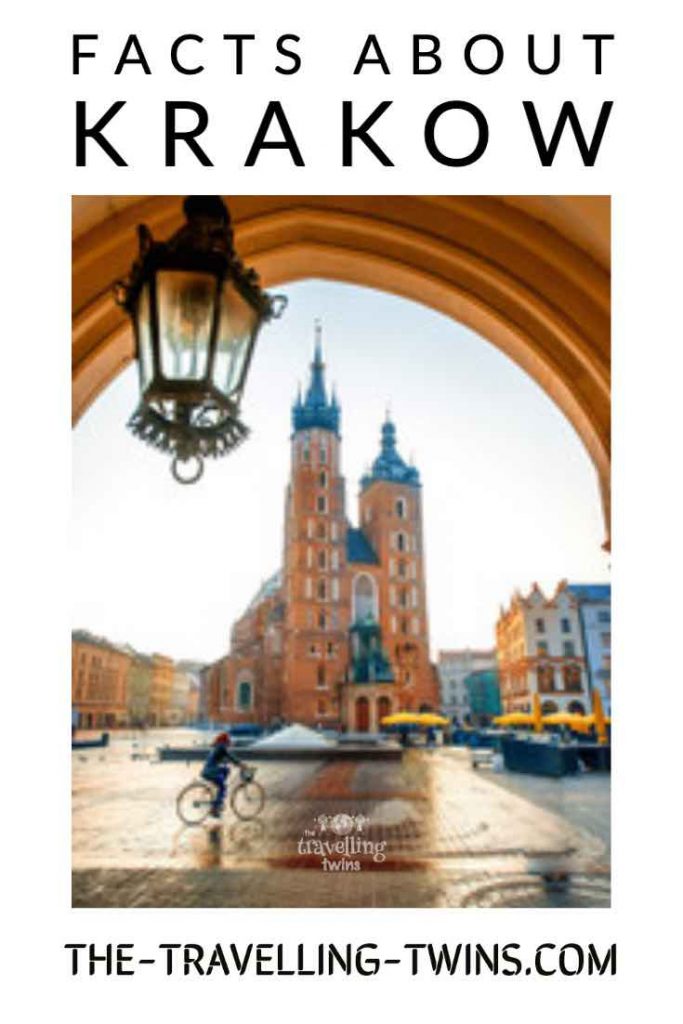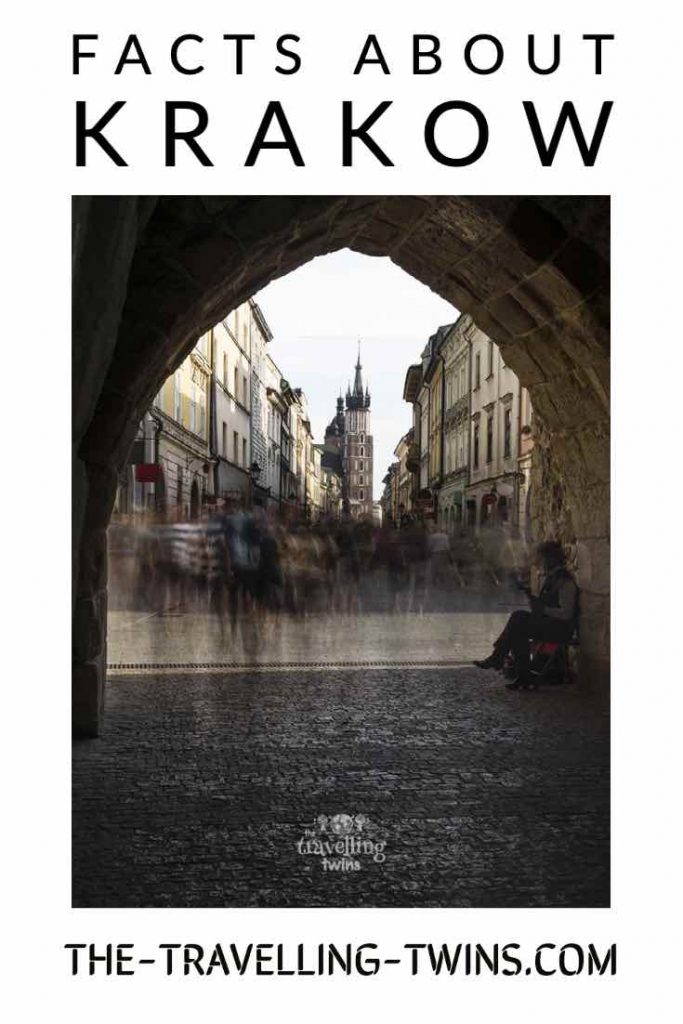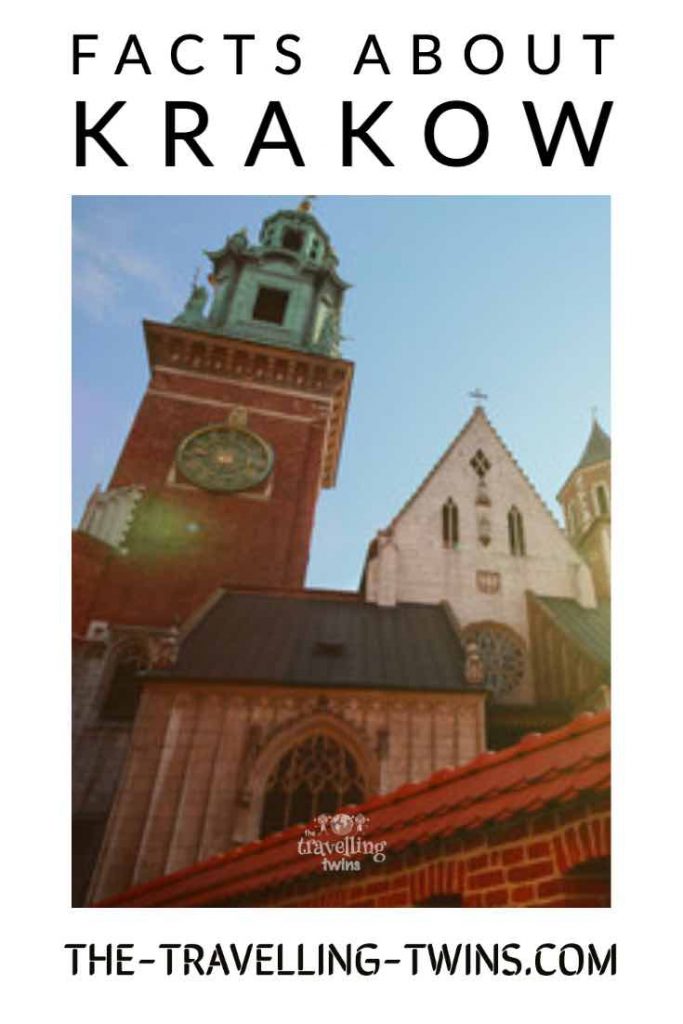Krakow is one of the best cities in Poland to visit. We love exploring Krakow with kids, and after a few visits, we decided to learn some Facts about Krakow, so now you can read and learn what is Krakow famous for.
Krakow is a city best known for its historical sites. It has been inhabited since at least the 7th century and was largely spared from destruction during World War II, so many historic buildings remain today. The city offers plenty to see for those who love exploring historical sites!
Krakow’s history dates back to the 7th century when it was founded on an island in the Vistula River by a tribe of Slavic people called Krakus, hence the name Kraków which translates as “the village of Krakus”. After being destroyed by invaders over time, it rose again with Poland’s independence in 1918. In 1939 Nazi Germany invaded and occupied Poland, including Kraków – but fortunately, many historical sites were left unharmed. So much history!
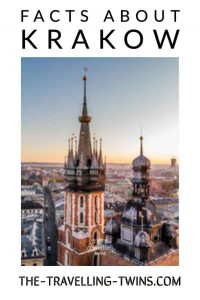
Facts about Krakow
Krakow Name
The Krakow name is traditionally derived from the legendary founder of Krakow – King Krakus.
Krakow official name is the Royal Capital City of Krakow.
Old Capital of Poland
Krakow was the capital of Poland in the years 1038-1795. King Zygmunt III Vasa transferred the Royal Court from Krakow to Warsaw, but Warsaw became the Capital of Poland only in 1919.
One of the oldest cities in Poland
Krakow is one of the oldest cities in Poland. The city dates back to the 7th century and was largely spared from destruction during World War II, so many historic buildings remain today.
The first written mention of Krakow was in 965 when Ibrahim ibn Yaqub Spanish traveller, mentioned Kraków as a rich city surrounded by forests.
Location of Krakow
Krakow is situated along the Vistula River, in Lesser Poland Province (Małopolska)
The average altitude of Krakow is 219 meters above sea level.
Krakow Main Market Square
The Main Market Square Krakow is one of the largest and most beautiful medieval squares in Europe. It has dimensions of 200 by 200 meters. It was laid out in 1257 and had the same urban and architectural layout to this day.
The Main Market Square Krakow and the whole old town is recognized as UNESCO World Heritage Site.
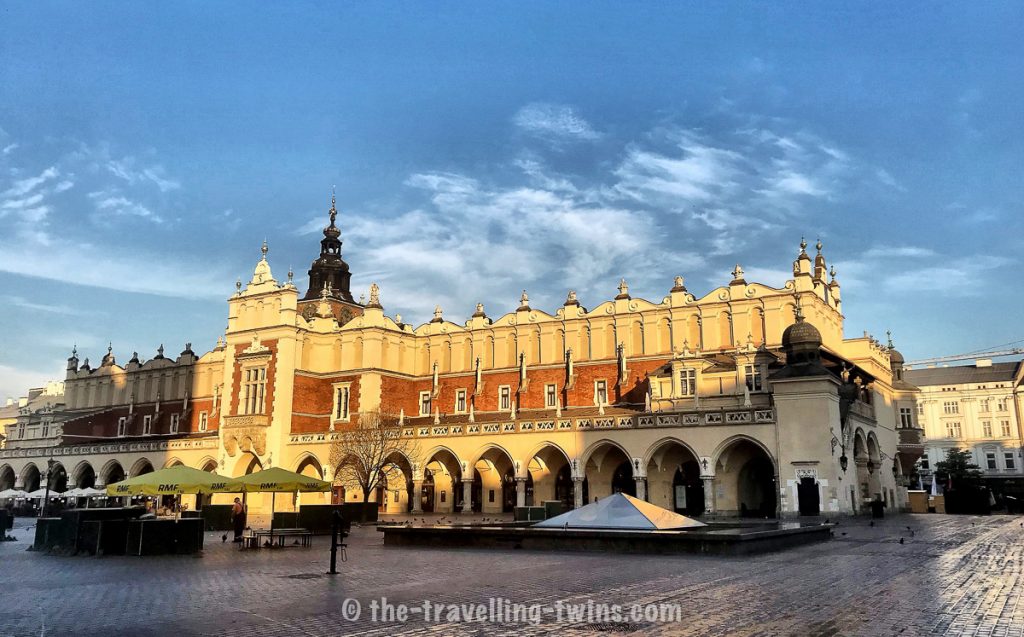
What is Krakow famous for?
Krakow is famous for the bugle call – St. Mary’s Trumpet Call
The Bugle call is played every hour from St Mary church (gothic cathedral on the city’s main square). The melody breaks off in the middle. The legend says the melody breaks in memory of the trumpeter killed in 1240, who was struck in the throat with a Tatar arrow while trumpeting the alarm.
Wawel Castle
Wawel Castle is the historical hill-fort located in Krakow, Poland. It has also been used for military purposes throughout history due to its easily defensible location. Wawel Castle is known as the former residence of kings and the political elite. The complex consists of many buildings erected at different time periods, forming a group linked by a common heritage and one of the most recognized landmarks in Poland.
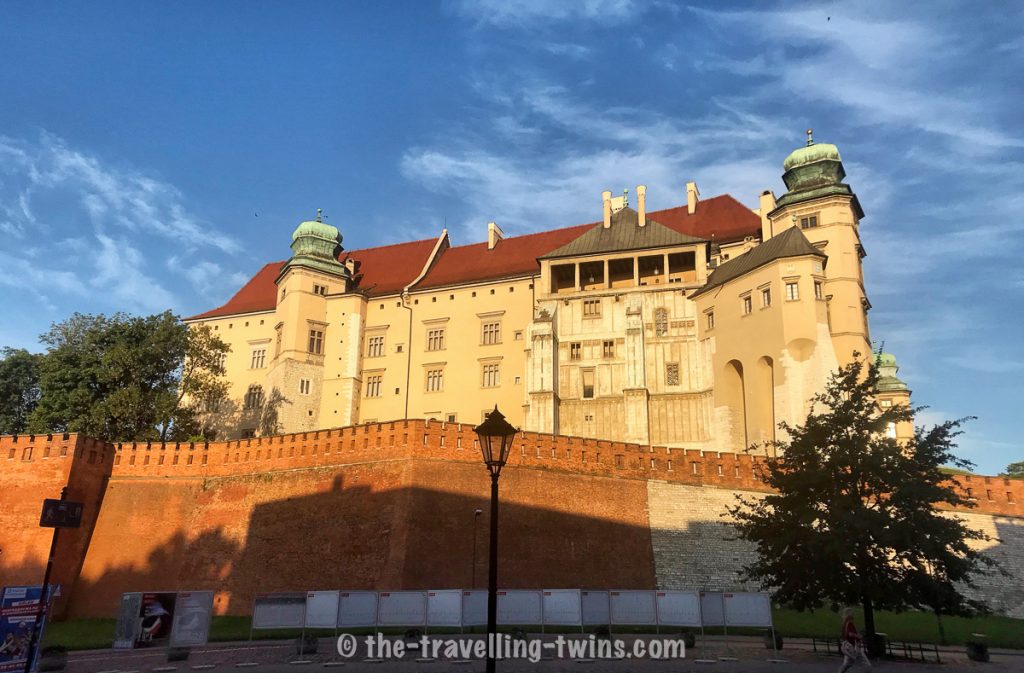
Wawel Castle is one of the largest castles in Poland
Krakow is famous for having own Dragon – Smok Wawelski
According to legend, King Krakus, the city’s legendary founder and ruler, was out hunting in the swamps around what is now Planty Park when he saw a fire-breathing dragon ( Smok Wawelski) terrorizing the countryside. On his return, the story goes, the King consulted with his wise men to find a solution. No one could help, so King promised his daughter to whoever will get rid of it. Brave men, knights and even royal princes tried to kill the dragon but ended up dead instead. Finally, a poor cobbler’s apprentice, called Skuba, succeeded where others had failed. He stuffed a lamb with sulphur and left it in the path of the dragon, who greedily devoured it and felt the fire in the stomach to extinguish it; he started drinking water from the Vistula River. He drank and drank until he exploded, thus ending the monster’s life. The King was so grateful for saving his daughter and Krakow from the dragon that the shoemaker was given his daughter’s hand in marriage and ownership of land, which includes today Castle Square where Wawel Hill stands.
Now under Wawel Hill, you can find the cave where the dragon was hiding and the iron replica of the dragon, which breath the fire every 5 minutes.
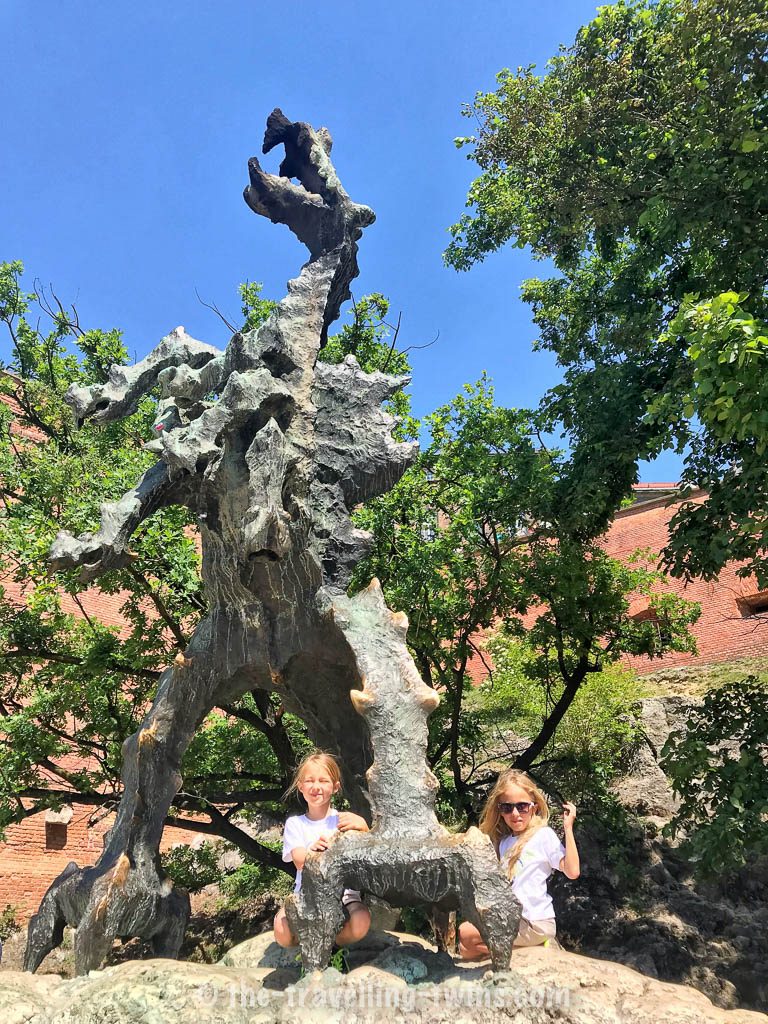
Pope John Paul II
In 1978, Karol Wojtyla – a former archbishop of Kraków, became Pope John Paul II – the first non-Italian Pope in more than 500 years. He was one of the most famous Poles, and he served as a spiritual leader for over three decades. He is also remembered as a promoter of peace and inter-faith dialogue and for his role in helping to end the Cold War.
The oldest church in Poland
The 10th-century St. Adalbert (Kosciół Swietego Wojciech) located on Market Square is the oldest remaining shrine in Poland.
Synagogues in Krakow
Before World War II, there were many Jews living in Krakow. Jewish culture and history can be found all over the city. One of the most interesting places to visit is Podgorze, also known as the Ghetto district. The neighbouring district of Kazimierz – The city’s Jewish quarter has many small synagogues that were used before World War II.
Kazimierz is also the place where you can find many nice bars and restaurants that offer great food and drinks while you enjoy some live music.
Schindler’s List
“Schindler’s List”, The Oscar-winning film by Steven Spielberg, was almost entirely shot in Krakow Kazimierz. The original Shindler factory was located in Zablocie, which still exists today and host two museums Museum of Contemporary Art in Kraków, and the Historical Museum of the City of Kraków, which shows the story of the holocaust victims.
Krakow is a University City
Krakow has over 650 years of university tradition, 23 universities, almost 200,000, while the whole population of Krakow is around 800,000. Krakow is known as one of the best places to study not only in Poland but all over Europe.
Main University of Krakow – Jagiellonian University
Jagiellonian University was founded in 1364 as Akademia Krakowska and is the oldest continuously operating university in Poland and the second-oldest university in Central Europe. Part of the University is still located in the original 14th–century Collegium Maius.
Jagiellonian University is also known for its extensive library, holding more than 30% of all volumes ever printed in Poland.
It is also the oldest university library in Poland, founded as early as the 13th century. The 15th-century building was once a campus of the Jagiellonian University, but now it houses other institutions’ libraries and archives – including one of Krakow’s largest lending libraries at over 500,000 volumes.
The Big Head
There is an Enormous Head sculpture in the Main Market Square. It is supposed to be the Head of love god Eros Bendato designed by Polish artist Igor Mitoraj. Though locals just called the Head. All kids love climbing inside, and playing peek a boo through eyes opening.
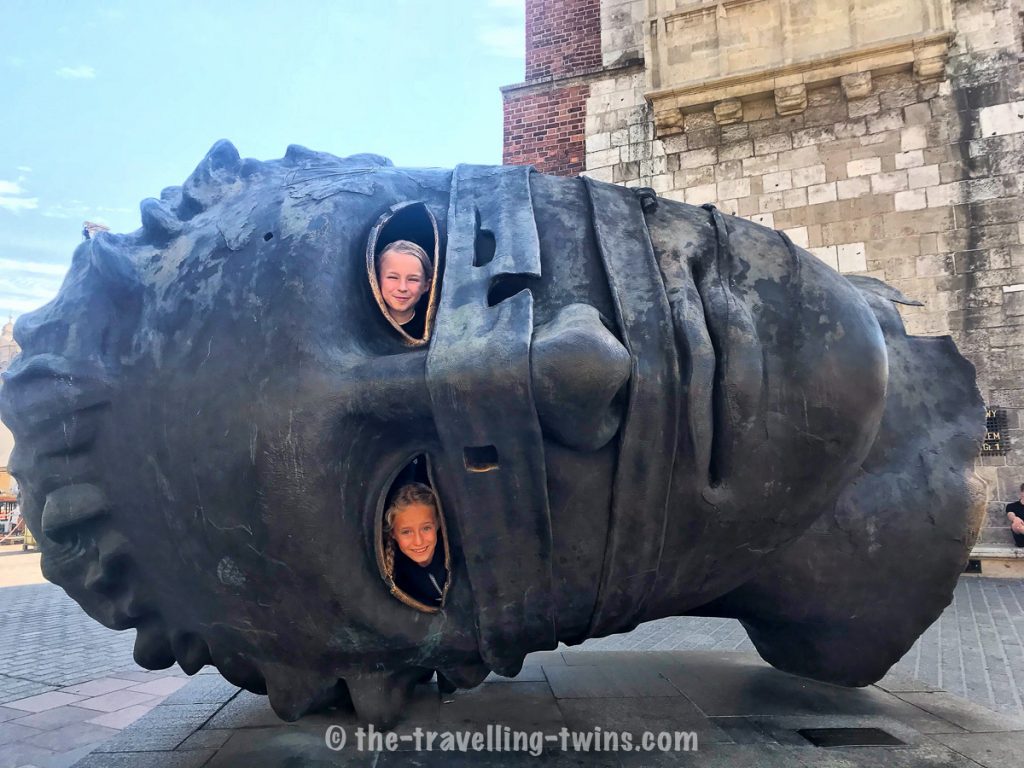
One Of Earth’s Chakras
It is believed that one Of Earth’s Chakras is located beneath the Chapel of St. Gereon on Wawel Hill. It is believed that the chakra emanates great power, which can heal any illness.
Krakow is famous for its charming theaters.
There are plenty of theatres in Krakow, including the Juliusz Slowacki Theater, Stary Theater and the Bagatela Theater. You should definitely try to go see a show if you’re ever there!
Other Krakow Facts
- Kraków was named the European Capital of Culture in 2000.
- in 2016 city hosted the World Youth Day
- It was named Unesco’s first City of Literature in June 2008, and since then, it has been home to many events and book fairs.
- Krakow is also one of the European Capitals of Gastronomy, which means it has some great restaurants to enjoy.
Facts on Krakow – Pin it for later
Privacy Policy Disclaimer
This website uses affiliate links for income and support.
If you like our website, please consider using these links. You will be directed to the vendor, and we will get a small commission on your purchase price at no increased cost to you.
We have researched facts stated here as far as practicable but please check anything critical before committing your time and money. We do not claim any special knowledge or expertise, and we are not consultants for our readers.
